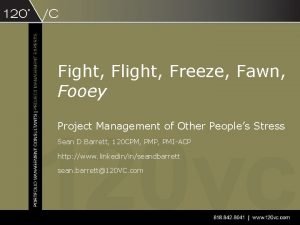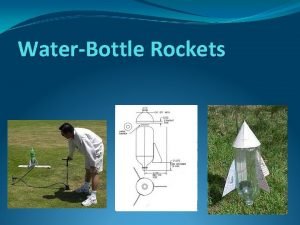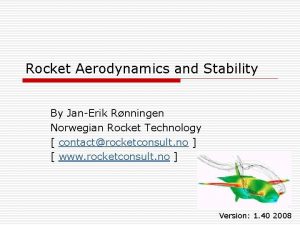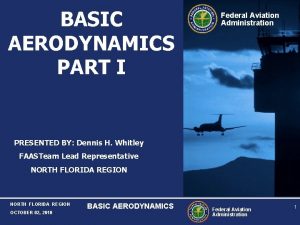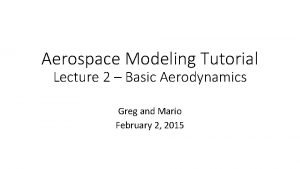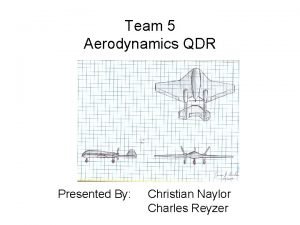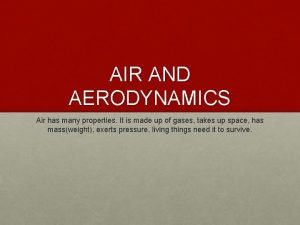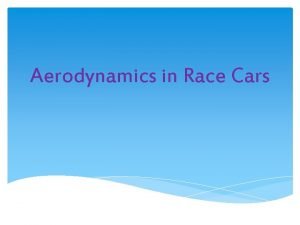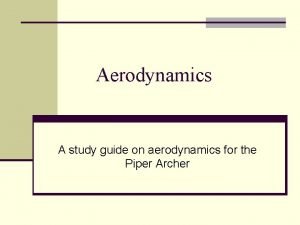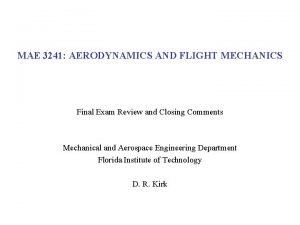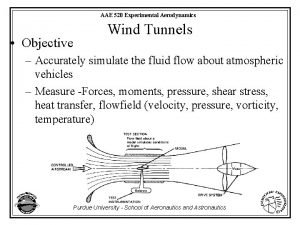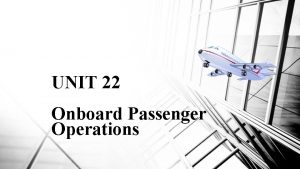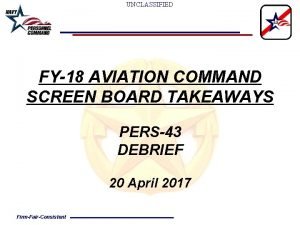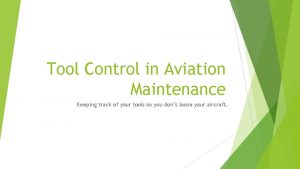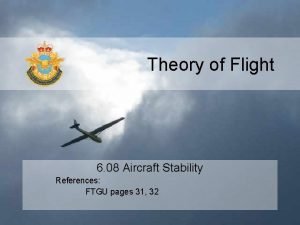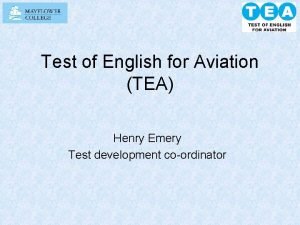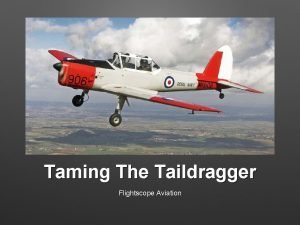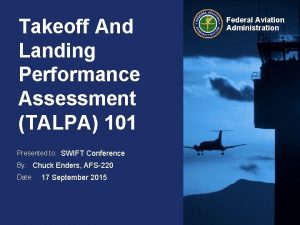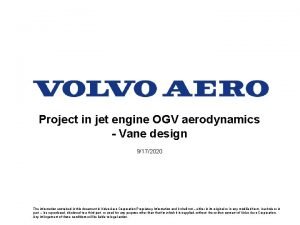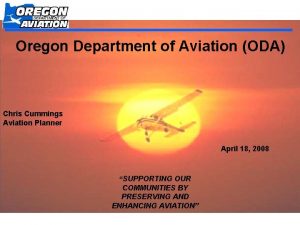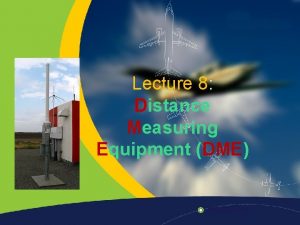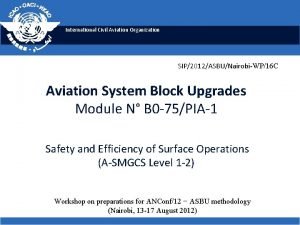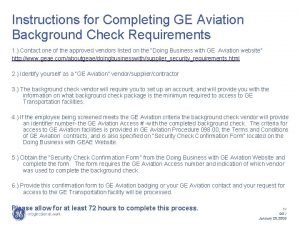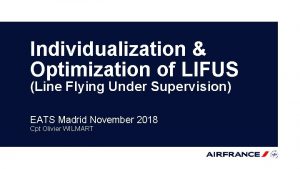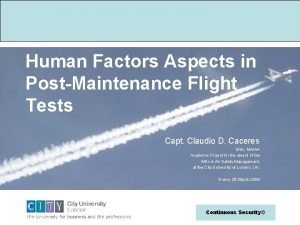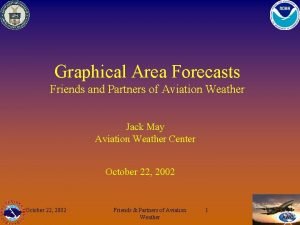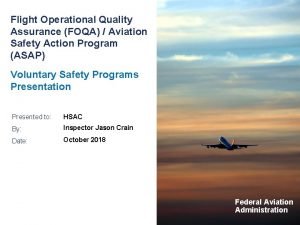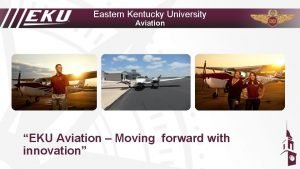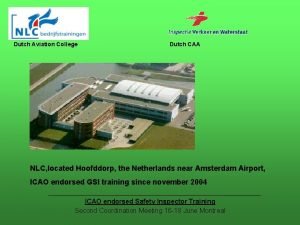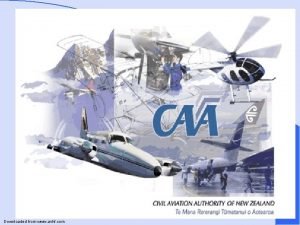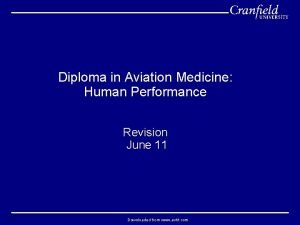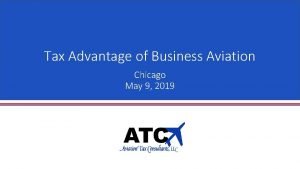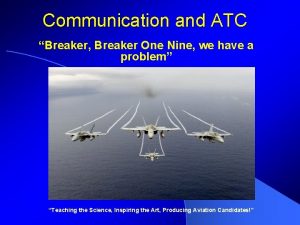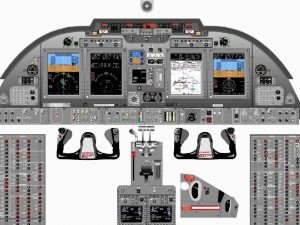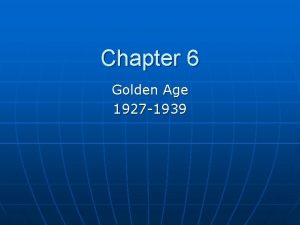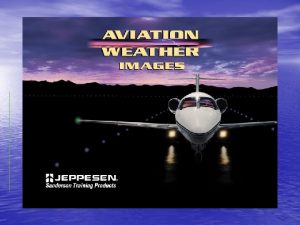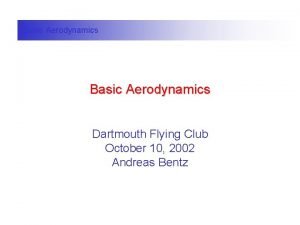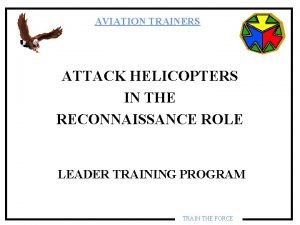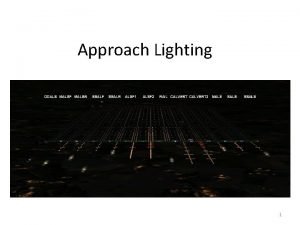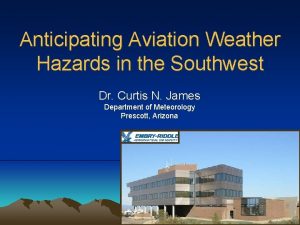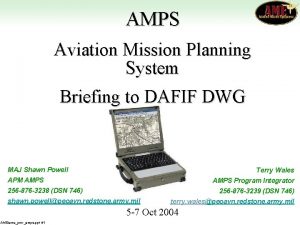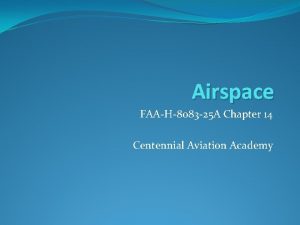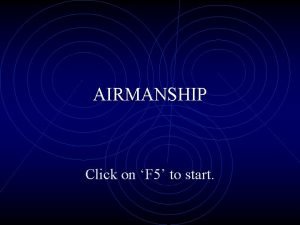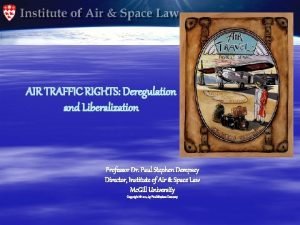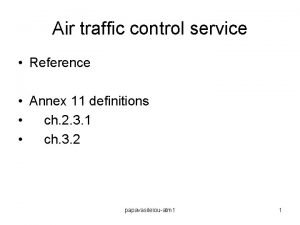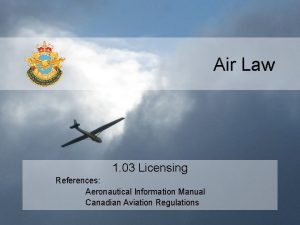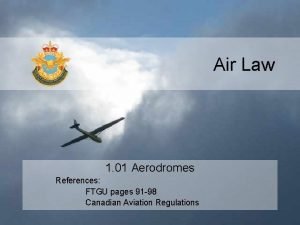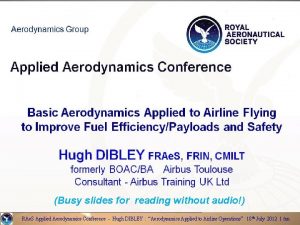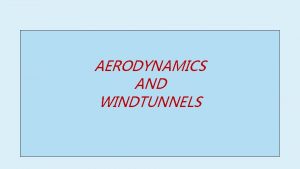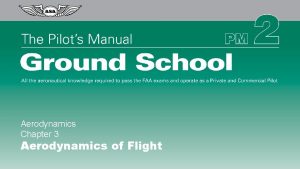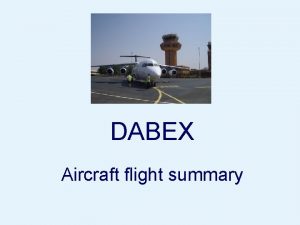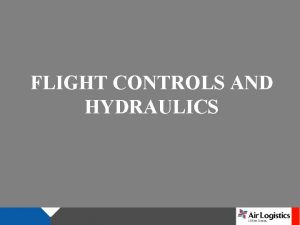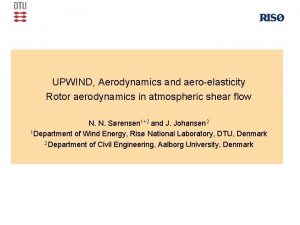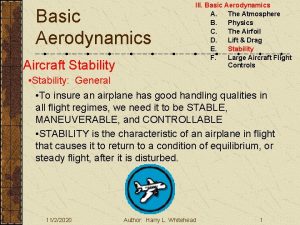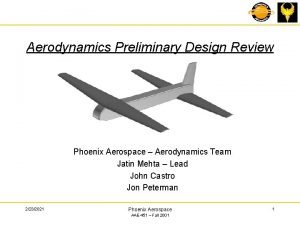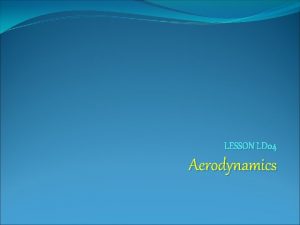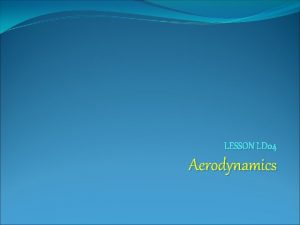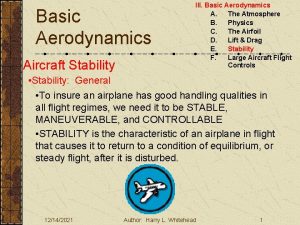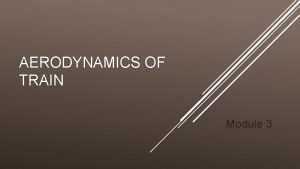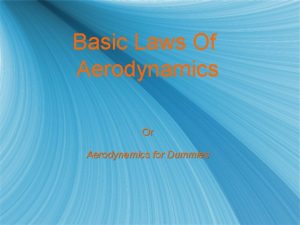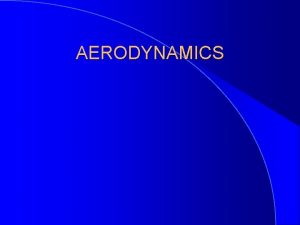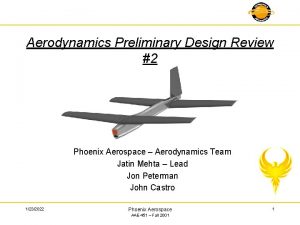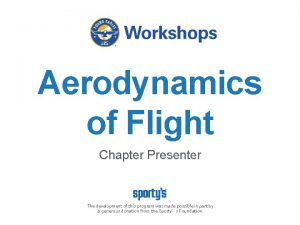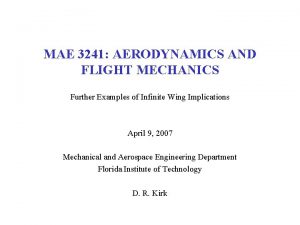Aerodynamics Chapter 3 Aerodynamics of Flight 2009 Aviation



























































- Slides: 59

Aerodynamics Chapter 3 Aerodynamics of Flight © 2009 Aviation Supplies & Academics, Inc. All Rights Reserved. The Pilot’s Manual – Ground School

Figure 3 -1. Balance of forces and moments. © 2009 Aviation Supplies & Academics, Inc. All Rights Reserved. The Pilot’s Manual – Ground School

Figure 3 -2. Indicated airspeed varies inversely with angle of attack. © 2009 Aviation Supplies & Academics, Inc. All Rights Reserved. The Pilot’s Manual – Ground School

Figure 3 -3. At a constant angle of attack, a lighter airplane must fly slower. © 2009 Aviation Supplies & Academics, Inc. All Rights Reserved. The Pilot’s Manual – Ground School

Figure 3 -4. Same power–lighter airplane has a lower angle of attack and flies faster. © 2009 Aviation Supplies & Academics, Inc. All Rights Reserved. The Pilot’s Manual – Ground School

Figure 3 -5. The thrust-required or drag curve. © 2009 Aviation Supplies & Academics, Inc. All Rights Reserved. The Pilot’s Manual – Ground School

Figure 3 -6. Both low speed and high speed require high thrust. © 2009 Aviation Supplies & Academics, Inc. All Rights Reserved. The Pilot’s Manual – Ground School

Figure 3 -7. The power-required curve. © 2009 Aviation Supplies & Academics, Inc. All Rights Reserved. The Pilot’s Manual – Ground School

Figure 3 -8. Maximum level-flight speed. © 2009 Aviation Supplies & Academics, Inc. All Rights Reserved. The Pilot’s Manual – Ground School

Figure 3 -9. Graph of drag versus TAS. © 2009 Aviation Supplies & Academics, Inc. All Rights Reserved. The Pilot’s Manual – Ground School

Figure 3 -10. Graph of power versus TAS. © 2009 Aviation Supplies & Academics, Inc. All Rights Reserved. The Pilot’s Manual – Ground School

Figure 3 -11. Speed stability. © 2009 Aviation Supplies & Academics, Inc. All Rights Reserved. The Pilot’s Manual – Ground School

Figure 3 -11. Same IAS (and lift) at a higher altitude means higher TAS. © 2009 Aviation Supplies & Academics, Inc. All Rights Reserved. The Pilot’s Manual – Ground School

Figure 3 -11. A zoom and a steady climb. © 2009 Aviation Supplies & Academics, Inc. All Rights Reserved. The Pilot’s Manual – Ground School

Figure 3 -12. The four forces in equilibrium in a steady climb. © 2009 Aviation Supplies & Academics, Inc. All Rights Reserved. The Pilot’s Manual – Ground School

Figure 3 -13. Maximum angle climb, maximum rate climb, cruise climb; use the one that suits the situation. © 2009 Aviation Supplies & Academics, Inc. All Rights Reserved. The Pilot’s Manual – Ground School

Figure 3 -14. Fly at the correct climb speed for best performance. © 2009 Aviation Supplies & Academics, Inc. All Rights Reserved. The Pilot’s Manual – Ground School

Figure 3 -15. Climb performance decreases with altitude. © 2009 Aviation Supplies & Academics, Inc. All Rights Reserved. The Pilot’s Manual – Ground School

Figure 3 -16. A typical climb performance table. © 2009 Aviation Supplies & Academics, Inc. All Rights Reserved. The Pilot’s Manual – Ground School

Figure 3 -17. Wind affects the flight path achieved over the ground. © 2009 Aviation Supplies & Academics, Inc. All Rights Reserved. The Pilot’s Manual – Ground School

Figure 3 -20. “Thrust required” and “thrust available” versus TAS. © 2009 Aviation Supplies & Academics, Inc. All Rights Reserved. The Pilot’s Manual – Ground School

Figure 3 -21. Climb gradient may be less with flaps extended. © 2009 Aviation Supplies & Academics, Inc. All Rights Reserved. The Pilot’s Manual – Ground School

Figure 3 -22. “Power required” and “power available” versus TAS. © 2009 Aviation Supplies & Academics, Inc. All Rights Reserved. The Pilot’s Manual – Ground School

Figure 3 -23. Flying the incorrect airspeed reduces excess thrust and angle of climb. © 2009 Aviation Supplies & Academics, Inc. All Rights Reserved. The Pilot’s Manual – Ground School

Figure 3 -24. Flying the incorrect airspeed reduces excess power and rate of climb. © 2009 Aviation Supplies & Academics, Inc. All Rights Reserved. The Pilot’s Manual – Ground School

Figure 3 -25. In a glide descent, a component of weight counteracts the drag. © 2009 Aviation Supplies & Academics, Inc. All Rights Reserved. The Pilot’s Manual – Ground School

Figure 3 -26. A smaller L/D ratio (increased drag) results in a steeper glide. © 2009 Aviation Supplies & Academics, Inc. All Rights Reserved. The Pilot’s Manual – Ground School

Figure 3 -27. Angle of attack versus L/D ratio. © 2009 Aviation Supplies & Academics, Inc. All Rights Reserved. The Pilot’s Manual – Ground School

Figure 3 -28. The flattest glide is achieved at the maximum L/D ratio. © 2009 Aviation Supplies & Academics, Inc. All Rights Reserved. The Pilot’s Manual – Ground School

Figure 3 -29. Steeper glide angle with flaps extended. © 2009 Aviation Supplies & Academics, Inc. All Rights Reserved. The Pilot’s Manual – Ground School

Figure 3 -30. The best glide angle is the same at all weights (maximum L/D) but the airspeed must be lower at lower weights. © 2009 Aviation Supplies & Academics, Inc. All Rights Reserved. The Pilot’s Manual – Ground School

Figure 3 -31. More ground is covered gliding with a tailwind and less with a headwind. © 2009 Aviation Supplies & Academics, Inc. All Rights Reserved. The Pilot’s Manual – Ground School

Figure 3 -32. “Air distance/altitude” is the same ratio as “lift/drag. ” © 2009 Aviation Supplies & Academics, Inc. All Rights Reserved. The Pilot’s Manual – Ground School

Figure 3 -33. By banking, the tilted lift force has a horizontal component which provides the centripetal force. © 2009 Aviation Supplies & Academics, Inc. All Rights Reserved. The Pilot’s Manual – Ground School

Figure 3 -34. The centripetal force pulls a body into a turn. © 2009 Aviation Supplies & Academics, Inc. All Rights Reserved. The Pilot’s Manual – Ground School

Figure 3 -35. The steeper the bank, the greater the lift force required from the wings. © 2009 Aviation Supplies & Academics, Inc. All Rights Reserved. The Pilot’s Manual – Ground School

Figure 3 -36. The steeper the bank angle, the greater the g-forces. © 2009 Aviation Supplies & Academics, Inc. All Rights Reserved. The Pilot’s Manual – Ground School

Figure 3 -37. Load factor versus bank angle. © 2009 Aviation Supplies & Academics, Inc. All Rights Reserved. The Pilot’s Manual – Ground School

Figure 3 -38. A steep level turn requires increased lift. © 2009 Aviation Supplies & Academics, Inc. All Rights Reserved. The Pilot’s Manual – Ground School

Figure 3 -40. Percentage increase in stall speed versus bank angle. © 2009 Aviation Supplies & Academics, Inc. All Rights Reserved. The Pilot’s Manual – Ground School

Figure 3 -41. A standard-rate turn requires a steeper bank angle at a higher airspeed. © 2009 Aviation Supplies & Academics, Inc. All Rights Reserved. The Pilot’s Manual – Ground School

Figure 3 -42. Turning performance is increased at low airspeeds. © 2009 Aviation Supplies & Academics, Inc. All Rights Reserved. The Pilot’s Manual – Ground School

Figure 3 -43. Constant-radius turn. © 2009 Aviation Supplies & Academics, Inc. All Rights Reserved. The Pilot’s Manual – Ground School

Figure 3 -44. A steeper bank angle at constant speed increases turn performance. © 2009 Aviation Supplies & Academics, Inc. All Rights Reserved. The Pilot’s Manual – Ground School

Figure 3 -45. An airfoil reaches its maximum lifting ability at the critical angle of attack. © 2009 Aviation Supplies & Academics, Inc. All Rights Reserved. The Pilot’s Manual – Ground School

Figure 3 -46. Turbulent flow over the horizontal stabilizer. © 2009 Aviation Supplies & Academics, Inc. All Rights Reserved. The Pilot’s Manual – Ground School

Figure 3 -47. The stall occurs at the same stall angle in all phases of flight, but not necessarily at the same speed. © 2009 Aviation Supplies & Academics, Inc. All Rights Reserved. The Pilot’s Manual – Ground School

Figure 3 -48. Stall speed increases with load factor. © 2009 Aviation Supplies & Academics, Inc. All Rights Reserved. The Pilot’s Manual – Ground School

Figure 3 -49. Relationship between stall speed, load factor and bank angle. © 2009 Aviation Supplies & Academics, Inc. All Rights Reserved. The Pilot’s Manual – Ground School

Figure 3 -50. Stall speed is a function of weight. © 2009 Aviation Supplies & Academics, Inc. All Rights Reserved. The Pilot’s Manual – Ground School

Figure 3 -51. Slipstream can lower stall speed. © 2009 Aviation Supplies & Academics, Inc. All Rights Reserved. The Pilot’s Manual – Ground School

Figure 3 -52. Examples of stall speeds in different situations. © 2009 Aviation Supplies & Academics, Inc. All Rights Reserved. The Pilot’s Manual – Ground School

Figure 3 -53. Built-in washout causes the wingtip to stall later than the root. © 2009 Aviation Supplies & Academics, Inc. All Rights Reserved. The Pilot’s Manual – Ground School

Figure 3 -54. The boundary layer over a flat surface. © 2009 Aviation Supplies & Academics, Inc. All Rights Reserved. The Pilot’s Manual – Ground School

Figure 3 -55. The boundary layer over the wing’s upper surface. © 2009 Aviation Supplies & Academics, Inc. All Rights Reserved. The Pilot’s Manual – Ground School

Figure 3 -56. The flight path in a spin. © 2009 Aviation Supplies & Academics, Inc. All Rights Reserved. The Pilot’s Manual – Ground School

Figure 3 -57. The airplane in a stable spin to the left. © 2009 Aviation Supplies & Academics, Inc. All Rights Reserved. The Pilot’s Manual – Ground School

Figure 3 -58. Close to the stall, reduced lift and increased drag on a dropping wing cause autorotation. © 2009 Aviation Supplies & Academics, Inc. All Rights Reserved. The Pilot’s Manual – Ground School

Figure 3 -59. Lift and drag effects on a dropping wing. © 2009 Aviation Supplies & Academics, Inc. All Rights Reserved. The Pilot’s Manual – Ground School
 Fight flight freeze fawn
Fight flight freeze fawn Water bottle rocket designs
Water bottle rocket designs Missile aerodynamics
Missile aerodynamics Co2 dragster aerodynamics
Co2 dragster aerodynamics China aerodynamics research and development center
China aerodynamics research and development center Basic
Basic Aerodynamics
Aerodynamics What is aerodynamics
What is aerodynamics Lift coefficient formula
Lift coefficient formula Uiuc applied aerodynamics group
Uiuc applied aerodynamics group Air and aerodynamics
Air and aerodynamics Aerodynamics of race cars
Aerodynamics of race cars Aerodynamics meaning
Aerodynamics meaning Aerodynamics system identification key
Aerodynamics system identification key Aerodynamics exam
Aerodynamics exam Aae 520
Aae 520 Unit22 virgin
Unit22 virgin Pers43
Pers43 Tool control in aviation maintenance
Tool control in aviation maintenance Sweepback lateral stability
Sweepback lateral stability Tea test of english for aviation
Tea test of english for aviation Flightscope aviation
Flightscope aviation Talpa aviation
Talpa aviation Faa talpa
Faa talpa Safety culture in aviation industry
Safety culture in aviation industry Ogv aircraft engine
Ogv aircraft engine Peo aviation org chart
Peo aviation org chart Oda
Oda Dme slant range
Dme slant range Sip aviation
Sip aviation Aviation background check
Aviation background check Lifus aviation
Lifus aviation 14cfr91
14cfr91 Aviation hazardous attitudes
Aviation hazardous attitudes Awc gfa
Awc gfa What is the flight operational quality assurance
What is the flight operational quality assurance What is an advisory circular in aviation
What is an advisory circular in aviation Eastern kentucky flights
Eastern kentucky flights Netherlands caa
Netherlands caa Hazardous attitudes
Hazardous attitudes Diploma aviation medicine
Diploma aviation medicine Aircraft tax consultants
Aircraft tax consultants Unit 7 customer service in the aviation industry
Unit 7 customer service in the aviation industry Aeronet aviation
Aeronet aviation Breaker one nine
Breaker one nine Vor block diagram
Vor block diagram Golden age of aviation 1927-1939
Golden age of aviation 1927-1939 3 stages of thunderstorm aviation
3 stages of thunderstorm aviation Coffin corner aviation
Coffin corner aviation Successive bounding
Successive bounding N9253n tail number
N9253n tail number Approach lighting systems
Approach lighting systems Rucsoundings
Rucsoundings Aviation mission planning system
Aviation mission planning system Airspace entry requirements
Airspace entry requirements Drdf aviation
Drdf aviation Sixth freedom traffic
Sixth freedom traffic Annex 11 aviation
Annex 11 aviation Aviation document
Aviation document Displaced threshold markings
Displaced threshold markings
